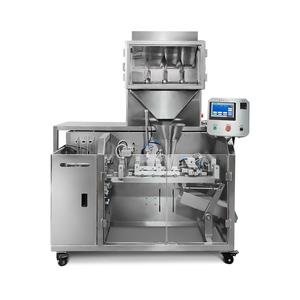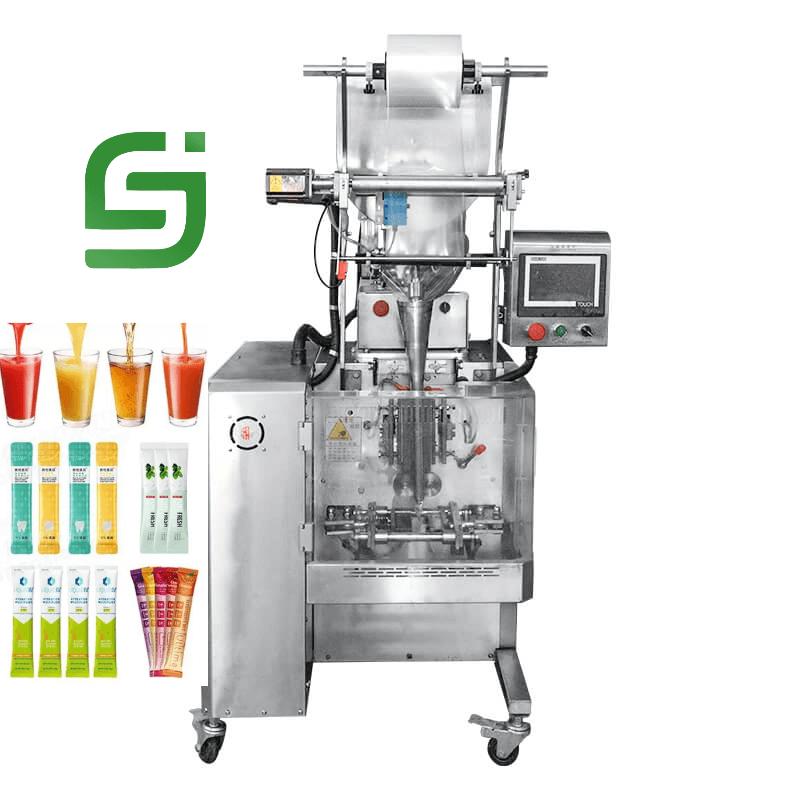Author:YISEN Pouch Packing Machine Manufacturer TIME:2024-12-01
Prefabricated bag packaging machines have revolutionized the packaging industry by providing efficient, reliable, and cost-effective solutions for various products. These machines are designed to automate the process of filling, sealing, and labeling bags made from different materials, streamlining production while ensuring quality and consistency. In this article, we will explore how these machines work, their components, and their applications in different sectors.
Prefabricated bag packaging machines utilize pre-made bags rather than forming bags on-site. This approach significantly reduces production time and labor costs. The bags can be made from various materials, including plastic, paper, and foil, catering to a wide range of products, from food items to pharmaceuticals. The machine’s design allows it to handle different bag sizes and configurations, making it versatile for different packaging needs.
The prefabricated bag packaging machine consists of several key components that work together seamlessly. These include a feeding system, filling system, sealing system, and control panel. Each part plays a crucial role in ensuring that the packaging process is efficient and precise. The feeding system transports the pre-made bags into the machine, while the filling system accurately dispenses the product into each bag. The sealing system then closes the bags securely, and the control panel allows operators to monitor and adjust the machine’s settings.
The operation of a prefabricated bag packaging machine can be broken down into several steps. First, the machine is set up with the appropriate parameters for the specific product and bag type. Once the machine is started, the feeding system pulls a bag from a stack and positions it for filling. The filling system then activates, delivering the designated amount of product into the bag. After filling, the sealing mechanism engages, applying heat or pressure to close the bag securely. Finally, the finished product is ejected from the machine, ready for labeling or further processing.

There are various types of filling systems used in prefabricated bag packaging machines, each tailored to different product characteristics. For instance, volumetric fillers measure the product by volume, making them suitable for dry goods like grains or powders. Gravimetric fillers, on the other hand, weigh the product before dispensing, which is ideal for more precise filling requirements, such as liquids or pastes. Choosing the right filling system is critical to achieving the desired accuracy and efficiency.

The sealing method employed by the machine is another important factor that impacts the packaging quality. Common sealing techniques include heat sealing, ultrasonic sealing, and pressure sealing. Heat sealing involves melting the edges of the bag to create a strong bond, while ultrasonic sealing uses high-frequency sound waves to achieve the same result without heat. Pressure sealing relies on mechanical pressure to seal the bags. Each method has its advantages, and the choice depends on the material used and the product being packaged.
Modern prefabricated bag packaging machines are equipped with advanced automation and control systems. These systems provide real-time monitoring of the packaging process, allowing for immediate adjustments if any issues arise. User-friendly interfaces enable operators to set parameters quickly and easily, reducing downtime and enhancing productivity. Additionally, some machines offer connectivity to central control systems, enabling better data collection and analysis for continuous improvement.
Prefabricated bag packaging machines are widely used across various industries. In the food sector, they package snacks, grains, and frozen foods, ensuring freshness and hygiene. The pharmaceutical industry utilizes these machines for packaging tablets, powders, and liquid medications, where precision and safety are paramount. Other sectors, such as chemicals and pet food, also rely on these machines to enhance their packaging processes.
Utilizing prefabricated bag packaging machines offers numerous benefits. These machines reduce labor costs, minimize material waste, and increase production speed. Their ability to maintain consistent quality enhances brand reputation and customer satisfaction. Furthermore, the versatility of these machines allows businesses to adapt to changing market demands quickly, making them a valuable investment for any packaging operation.

While prefabricated bag packaging machines offer significant advantages, there are also challenges that manufacturers must consider. One major challenge is the initial investment cost, which can be substantial. Additionally, regular maintenance is required to ensure optimal performance and longevity of the machine. Businesses must also ensure that the machine is compatible with their specific bag types and product characteristics to avoid operational issues.
The packaging industry is continuously evolving, and prefabricated bag packaging machines are no exception. Future trends may include increased automation, integration with artificial intelligence for predictive maintenance, and enhancements in sustainability through the use of eco-friendly materials. As consumer preferences shift towards more sustainable practices, the demand for innovative packaging solutions will likely grow, pushing manufacturers to adapt and improve their technology.
In summary, prefabricated bag packaging machines play a crucial role in modern manufacturing and packaging processes. By automating the filling and sealing of bags, these machines enhance efficiency, reduce costs, and improve product quality. As technology continues to advance, the capabilities of these machines will expand, offering even greater benefits to industries worldwide. Investing in a prefabricated bag packaging machine can lead to significant improvements in productivity and competitiveness in today’s fast-paced market.